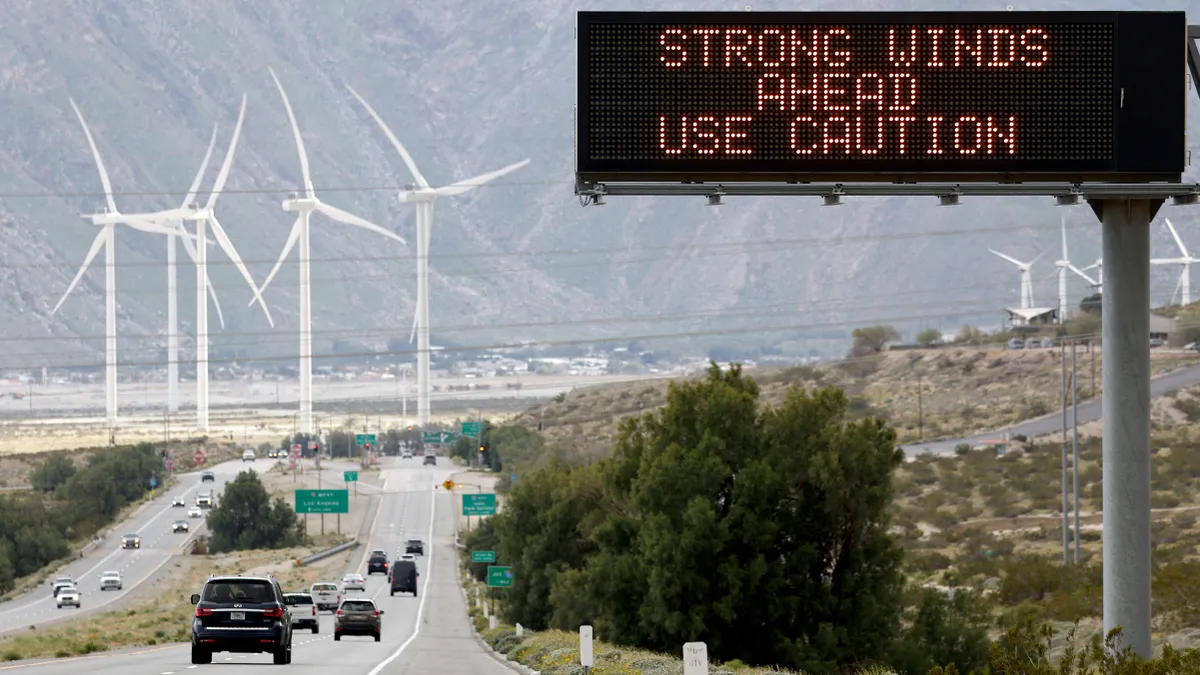The following is a contributed article by Ted Thomas, Chairman of the Arkansas Public Service Commission, and Jeff Dennis, Managing Director and General Counsel at national business group Advanced Energy Economy.
Distributed energy resources (DERs) are rapidly expanding as technologies advance, their costs decline and customers demand more control over their own energy usage.
The rapid deployment of technologies like onsite renewable energy generation, battery storage, fuel cells and electric vehicles, along with enabling consumer devices and software controls, promises to bring significant benefits not only to the customers deploying them, but also for the electricity grid as a whole.
Capturing these benefits requires full utilization of DERs, including the ability to provide both retail and wholesale services.
Integrating DERs in wholesale markets doesn't just provide the customer a potential revenue stream, it provides wholesale grid operators a new set of distributed assets to ensure reliability and resilience against natural and man-made threats to the existing grid. It also improves competition in wholesale markets, ensuring just and reasonable rates for all customers.
To its great credit, the Federal Energy Regulatory Commission (FERC) has recognized these broad-ranging benefits and taken significant steps to unlock the value of DERs.
In Order No. 841, FERC required Regional Transmission Organizations and Independent System Operators (RTOs/ISOs) to adjust their market rules to allow energy storage resources, including those located on the distribution system and behind the meter, to participate in their wholesale markets and provide all of the services they are technically capable of. FERC is poised to issue a similar Final Rule requiring RTOs/ISOs to allow aggregations of DERs to participate in their markets.
Unfortunately, bureaucratic thinking about the electricity grid and the role of customers, rooted in the technologies and grid of the past, threatens to bottle up the economic and reliability benefits of greater DER adoption.
Citing jurisdictional, reliability and cost concerns, certain entities — led by the National Rural Electric Cooperative Association (NRECA) — have urged FERC to give states, co-ops, and municipal utilities broad authority to bar DERs from competing in the wholesale markets. In a letter to Chairman Neil Chatterjee, 22 U.S. Senators echoed these concerns and urged FERC to restrict DER participation to only those authorized by local authorities.
Misplaced concerns
These concerns are misplaced and, in the case of NRECA, self-serving.
The calls for a local veto misapply the jurisdictional provisions in the Federal Power Act, overstate the impact of FERC's regulation on state authority, and would needlessly restrict the ability of customers and grid operators to fully utilize DERs — limiting customer choice, diminishing the reliability benefits of integrating DERs into the wholesale markets and ultimately impairing wholesale competition and increasing customer costs.
While we come from different perspectives — one the chairman of a public utility commission in a state with vertically integrated utilities, the other representing the interests of advanced energy companies, whose products and services include many forms of DER — we agree that this kind of thinking must change for customers to fully enjoy the benefits of new technologies.
We respect state and local authority over retail service and the distribution grid as much as anyone. It is a central tenet of U.S. electric system regulation.
But we are troubled by proposals (like the state and local "opt out" proposed by NRECA and others) that would, under the banner of "preserving state and local jurisdiction," erect barriers to market participation by DERs and restrict how they can be used.
That's why, in recent filings with FERC regarding the pending DER aggregation rulemaking, we separately endorsed an approach to harmonizing state and federal authority that allows DER owners and operators to choose whether to participate in wholesale markets, while also allowing states to decide whether those DERs should be able to simultaneously participate in their retail programs.
FERC's role
Allowing DER owners and operators to access wholesale markets would not "eliminate local jurisdiction" or allow FERC to "regulate the interconnection of additional resources to the distribution system and much of the distribution system itself" as NRECA's Jim Matheson claims.
To the contrary, this approach is fully consistent with the Federal Power Act's grant of authority to FERC to regulate the wholesale markets and, as the Supreme Court recently found in FERC v. EPSA with respect to demand response, would not intrude on the authority of state and local regulators to regulate retail markets.
FERC already regulates wholesale transactions by resources located on the distribution grid without infringing on state authority; providing that same treatment to aggregated DERs is far from a jurisdictional "power grab."
In fact, FERC is legally bound to regulate the terms and conditions of DER participation in wholesale markets. Such transactions are wholesale in nature and can only be regulated by FERC under the terms of Federal Power Act.
In FERC v. EPSA, the Supreme Court held that denying FERC jurisdiction in similar wholesale transactions for demand response would create a "regulatory gap" that Congress did not intend. And, as FERC has already held with regard to energy storage, failing to remove barriers to the participation of DERs would diminish wholesale market competition and result in rates that are unjust and unreasonable.
Matheson's assertion that allowing aggregations of DERs to participate in wholesale markets could cause "system disruptions," "fluctuations in voltage and reduced service quality" and "increased costs" to distribution utilities similarly overlooks the ways in which FERC has already addressed these issues and the role of state and local authorities and distribution utilities in resolving them.
For example, in Order No. 841, FERC confirmed that distribution reliability concerns can and should be addressed in interconnection agreements. FERC also made clear that any costs imposed on distribution systems by wholesale market participation may be recovered by distribution utilities.
Finally, FERC's proposed rule suggested a process for distribution utility review of the DERs included in a wholesale aggregation. This process, with modest modifications, will effectively address distribution utility reliability concerns for all but the smallest of utilities.
Without question, broader participation of DERs in the wholesale markets will present new challenges along with customer, reliability and resilience benefits.
FERC should be commended for the steps it has already taken, and has proposed to take with respect to DERs, to address these challenges, including the need for state and local regulators and distribution utilities to continue to have a central role. These steps ensure that state and local regulators and distribution utilities can manage any reliability and cost impacts of DER participation in wholesale markets.
A final rule that allows state regulators and co-op boards to unilaterally ban DER participation would severely harm the ability of customers and DER developers to come up with innovations that benefit the grid and reduce consumer costs across territories far greater than any one state or service area.
What's needed is a framework of shared authority that puts the electricity industry on a path to ensuring that all resources can fairly compete to provide service on the basis of price and performance, a result that would benefit all of us.






















